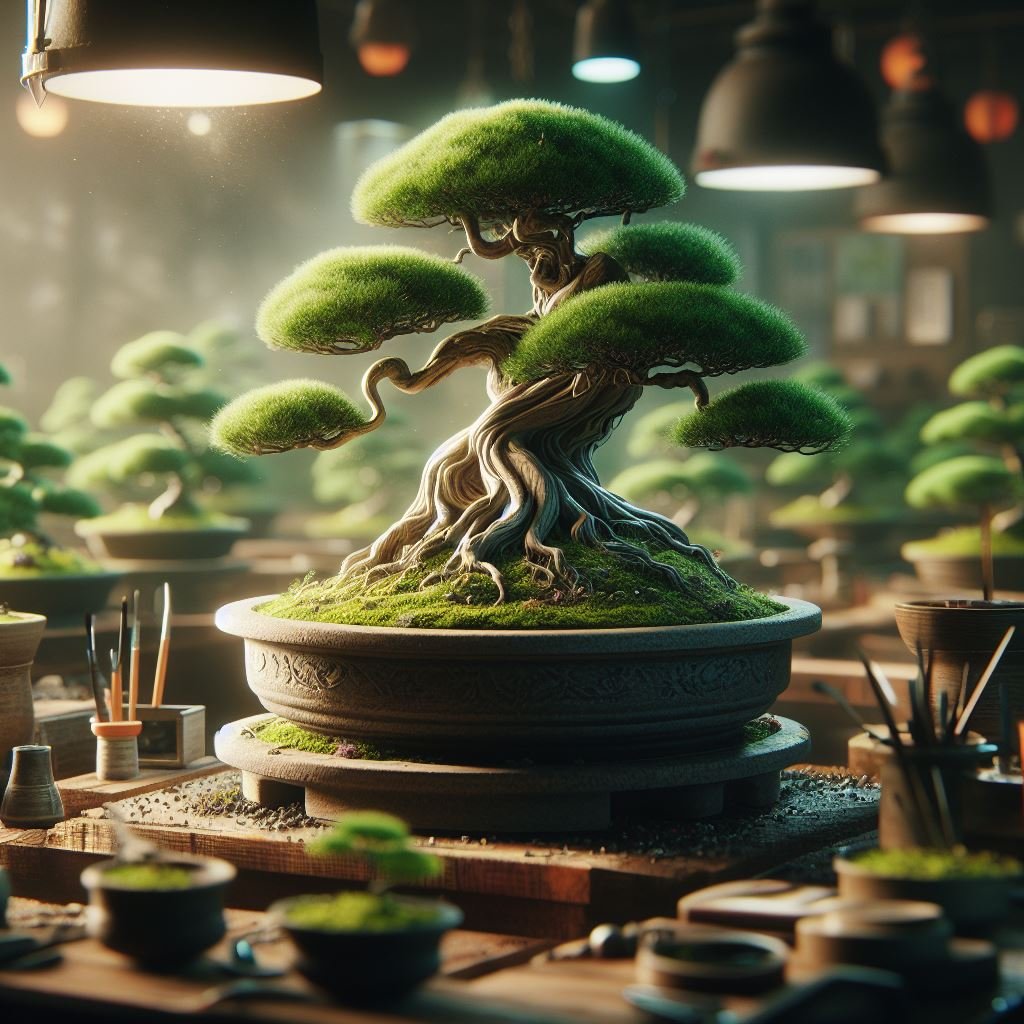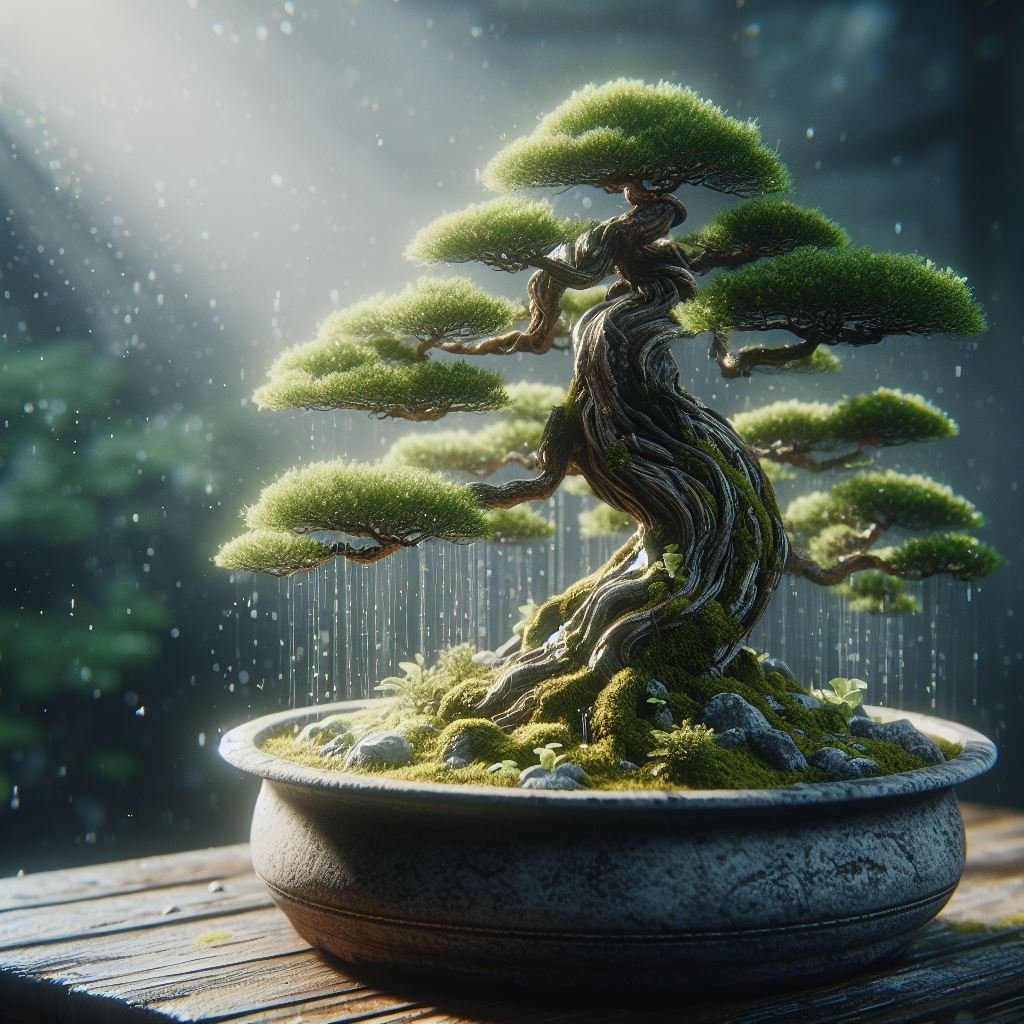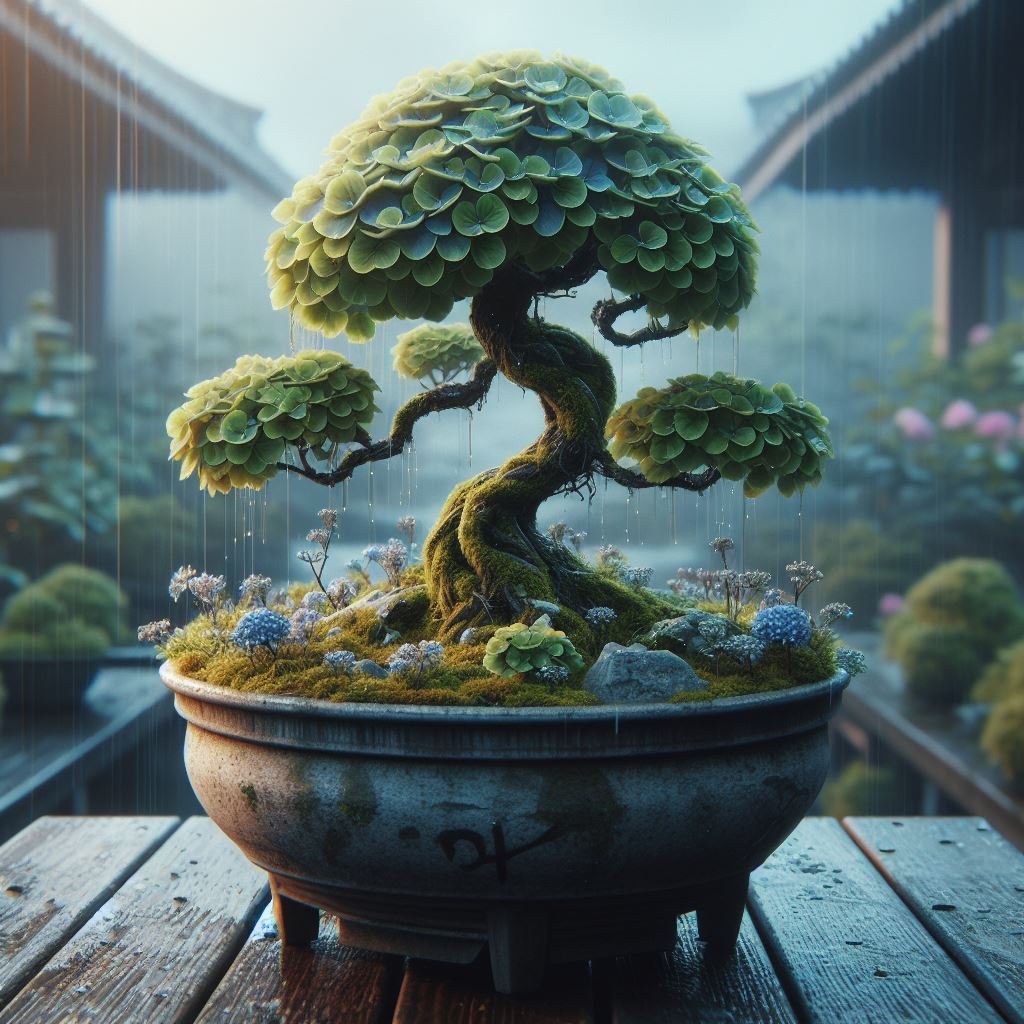The term ‘Arbol Bonsai’ refers to the intricate art of cultivating miniature trees in pots, a practice that marries horticulture and aesthetics in a unique blend. Originating from China and perfected in Japan, the bonsai tradition has captured the hearts of plant lovers worldwide. This article delves into the history, meaning, and cultivation techniques of arbol bonsai, offering insights into its popularity on platforms like Amazon, Pinterest, and Instagram.
Introduction
Arbol Bonsai, also known as the art of bonsai, is a horticultural practice that has fascinated and inspired people for centuries. This ancient Asian tradition involves the meticulous cultivation of miniature trees in pots, creating living works of art that embody nature’s beauty in a compact form.

The relevance of arbol bonsai in today’s world extends beyond its cultural origins. It serves as a symbol of patience, harmony, and the delicate balance between man and nature. In an era where mindfulness and green living are highly valued, the practice of bonsai offers a unique way to engage with nature on a personal level, making it a topic of enduring interest and importance.
The History and Meaning of Arbol Bonsai
The art of bonsai, known as ‘Arbol Bonsai‘ in Spanish, is a fascinating blend of horticulture and aesthetics that has captivated enthusiasts worldwide. This section will explore the historical evolution of this art form and its profound symbolic significance.
The Chinese Origins and Japanese Refinement of Bonsai
The roots of bonsai trace back to the Chinese Empire around 700 AD, where it began as the art of ‘pun-sai.‘ This practice involved cultivating miniature trees and shrubs in pots, creating beautiful landscapes that mirrored nature on a smaller scale. Over time, the art form was introduced to Japan, where it was refined and developed into what we know today as bonsai. The Japanese incorporated their unique aesthetics and philosophical outlook into the practice, resulting in a more simplified and minimalist style compared to the elaborate Chinese ‘pun-sai‘ or ‘penjing‘.
Linguistic Roots and Symbolic Significance of ‘Bonsai’
The term ‘bonsai’ is of Japanese origin and directly translates to “tree in a pot“. However, the concept of bonsai is far more nuanced and layered than its literal translation. A bonsai is a miniature replica of nature, embodying the beauty and resilience of mature trees in a small container. It serves as a symbol of harmony, balance, and the enduring bond between man and nature. The cultivation of a bonsai tree requires patience and careful attention, reflecting the values of discipline and mindfulness.
The Art of Growing an Arbol Bonsai

Popular Species for Bonsai Cultivation
Numerous tree species can be cultivated into bonsai, each with unique characteristics that make them suitable for this art form. Some of the most popular species include:
- Juniper: Juniper trees, particularly the Green Mound Juniper, are a favorite among bonsai enthusiasts due to their resilience and adaptability. They exhibit a wide variety of forms and respond well to pruning and aging techniques.
- Elm: Various types of elms, such as American, Slippery, Rock, and Siberian elms, make good bonsai subjects. Their appealing leaf shape and branch structure make them ideal for creating miniature landscapes.
- Pine: Pine trees, especially the Bristlecone Pine, are chosen for their distinctive needles and rugged bark. They can survive in harsh conditions, adding to their appeal as bonsai trees.
- Japanese Maple: Known for their stunning autumn colors, Japanese maples are highly regarded in the bonsai world. Their delicate leaves and intricate branching patterns create a beautiful display.
Basic Care Instructions and Tips for Beginners
Caring for a bonsai requires patience and attention to detail. Here are some basic care instructions:
- Watering: Bonsai trees need to be watered regularly. However, avoid overwatering as it can lead to root rot. The frequency of watering depends on the type of tree, its size, and the climate.
- Sunlight: Most bonsai trees require at least five hours of sunlight per day. Place your bonsai in a location where it can receive enough light.
- Pruning: Pruning is essential in maintaining the miniaturized size of the tree and for shaping it. Regular pruning also helps to promote the health of the tree.
- Feeding: Bonsai trees need nutrients to thrive. Use a specialized bonsai fertilizer and follow the instructions on the package for the best results.
The Role of Decorative Containers and Humidity Trays in Bonsai Cultivation
The container plays a vital role in bonsai cultivation. It not only serves as the home for the tree but also contributes to the overall aesthetic of the bonsai. Bonsai containers come in various shapes, sizes, and colors, and the choice of container can greatly affect the presentation of the bonsai.
Humidity trays are also important in bonsai care. They help maintain the humidity around the bonsai, which is particularly beneficial in dry indoor environments. The tray also catches any excess water that drains from the container, preventing damage to the surface on which the bonsai is placed.
Arbol Bonsai in Modern Culture

The Popularity of Bonsai on Online Platforms Like Amazon and Pinterest
The popularity of bonsai, or Arbol Bonsai, is evident on online platforms like Amazon and Pinterest. On Amazon, a variety of bonsai trees and DIY kits are available for purchase, including unique offerings like the Grow-Your-Own Cherry Blossom Bonsai Tree Kit. There’s also an extensive offering of popular bonsai species such as Juniper and Satsuki Azalea.
Pinterest, known for its wealth of visual inspiration, is home to countless boards dedicated to bonsai. From showcasing “Bonsai of the Day” to providing ideas for bonsai gardens, this platform fosters a vibrant community of bonsai enthusiasts.
The Commercial Availability of Bonsai Trees at Garden Centers and Online Stores
Today, bonsai trees are readily available to the general public, making the art of bonsai more accessible than ever before. Major garden centers often carry a selection of bonsai trees, and numerous online stores specialize in bonsai and related products. The availability of these trees, along with the plethora of online resources and communities, means that anyone interested in bonsai can easily get started.
Sources
- Grow Your Own Cherry Blossom Bonsai Tree Kit – House Beautiful ↩
- Satsuki Azalea – Pinterest ↩
- Juniper Bonsai – Pinterest ↩
- Most popular “Bonsai of the Day” – Pinterest ↩
Buy Bonsai Grow Kit (Cheap Price)

Conclusion
Arbol Bonsai, or the art of cultivating miniature trees, is a profound practice that has deep roots in Chinese and Japanese culture. The journey of bonsai cultivation is much more than just growing a tree in a pot; it’s about embodying nature’s resilience and beauty on a smaller scale. It’s about patience, discipline, and a mindful connection with the living world.
The popularity of bonsai in modern culture is a testament to its timeless appeal. From the array of bonsai trees available on Amazon to the vibrant communities of enthusiasts on platforms like Pinterest and Instagram, the influence of bonsai is evident.
Whether you’re a seasoned horticulturist or a beginner looking to start a new hobby, the world of bonsai offers a rewarding and fulfilling experience. As you prune your tree and watch it grow, you’re not just shaping a plant – you’re also cultivating a deeper appreciation for the natural world.
We encourage you to delve into the world of bonsai cultivation. Begin your journey with a popular species like the Green Mound Juniper, and remember, patience and attentiveness are key. With time and care, you can create a living work of art that symbolizes harmony, balance, and the enduring bond between man and nature. Happy bonsai growing!
Frequently Asked Questions (FAQs)
What is the ideal location for my bonsai tree?
Every bonsai species has unique requirements for sunlight and temperature, but most prefer a sunny spot with indirect light, and temperatures between 60-70 degrees Fahrenheit. Always research your specific species to ensure optimal conditions.
How often should I water my bonsai tree?
The frequency of watering can vary based on the bonsai species, pot size, soil type, and the surrounding environment. However, a good rule of thumb is to water when the top inch of soil feels dry. Be careful to avoid overwatering as it can lead to root rot.
When should I prune my bonsai tree?
Regular pruning is crucial to maintain the tree’s shape and size. The best time to prune is usually in the spring when the tree is in its active growth phase, but maintenance pruning can occur throughout the year.
How often should I feed my bonsai tree?
Bonsai trees generally need to be fed every two weeks during the growing season (spring to autumn) and once a month in the winter. The fertilizer should be a balanced mixture of Nitrogen, phosphorus, and Potassium.
Can I grow a bonsai tree indoors?
Yes, certain species of bonsai trees can thrive indoors with adequate light and humidity. Some popular indoor bonsai varieties include the Ficus Bonsai, the Jade Plant, and the Hawaiian Umbrella Tree.
Do bonsai trees need a special kind of soil?
Yes, bonsai trees typically require a special soil mix that is fast-draining. This soil often consists of a mix of akadama, pumice, and lava rock.
How long can a Bonsai live?
With proper care, bonsai trees can live for many decades, and some even live to be hundreds of years old. The oldest known bonsai tree is over a thousand years old.
Sources
- Amazon Los más vendidos: Mejor Bonsái Interior
- El bonsái: conoce la historia y el significado…
- Plantas bonsai, Árbol bonsai de interior, Árboles…
- Bonsái – Wikipedia, la enciclopedia libre
- Bonsai Trees – Garden Center
- Chile Bonsai (@chilebonsai)
- Más de 30 000 imágenes de árboles bonsái
- Arboles Bonsai | MercadoLibre
- Bonsai de Árbol de Jade #jardin #succulents … – YouTube





